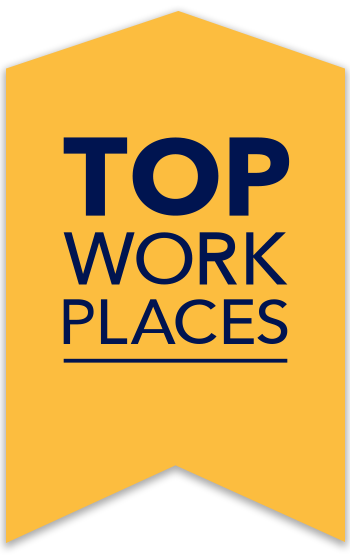Communication is at the heart of every human interaction. It also plays a significant role at work, from the employee experience to collaboration and execution. But effective communication can be challenging at times, especially now with many companies operating with a remote or hybrid workforce. Let’s take a closer look at the benefits of effective communication and explore the strategies you can use to improve it at your organization.
What is workplace communication?
Workplace communication is how employees exchange ideas and information in a work environment. It includes verbal and nonverbal communication, from conversations, emails, and instant messaging to eye contact, body language, and tone of voice.
Effective communication is essential to getting work done, collaboration, trust, and a healthy workplace culture. It also lays the groundwork for successful change and forward growth.
Types of workplace communication
There are several types of communication in the workplace, both internal and external. Each addresses a specific audience with a particular purpose:
- Customer communications Face-to-face or virtual interactions, email messaging, social posts, and more address customer needs and build brand awareness.
- Informal communications: Chats, instant messages, emails, and other forms of quick communication that happen across the organization throughout the day.
- Announcements: Channels such as Slack are used for this communication and often convey brief company updates and celebrations.
- Meetings: The most common way work gets done in an organization, these sessions invite collaboration and team building.
- Presentations: Virtual or in-person presentations educate and inform large audiences.
- Upward communication: One-way communication between individuals and their managers or other leaders, such as status updates and reports.
- Leadership communication: Senior leaders typically use one-way communication to inform employees about the company’s direction, updates, and changes. This type of communication shapes leadership’s impact on organizational culture.
Why is workplace communication important?
Workplace communication impacts organizational alignment, employee engagement, customer satisfaction, and overall performance. Improving your communication strategy helps businesses’ day-to-day operations in many ways. For example, it helps improve company culture and identify why employees leave. But it also boosts your return on investment by increasing your ability to attract and serve customers. The combination of external and internal impact makes investing in communication improvements advantageous.
Hallmarks of good workplace communication
Effective workplace communication strategies include the “seven Cs of communication”:
- Clear: Simple objectives and purpose that are easy to understand.
- Concise: Short without filler words and phrases.
- Concrete: Deliver a specific message supported by facts.
- Correct: Proper grammar that is accurate and free of mistakes.
- Coherent: Logical messaging that stays on point.
- Complete: Conveys everything with a clear call to action.
- Courteous: Polite, professional, and tactful.
Benefits of effective workplace communication
Effective workplace communication comes with many benefits, including:
- Higher engagement: Employees are more willing to bring their best to work when they feel heard, valued, and appreciated.
- Increased productivity: Efficiency and effectiveness improve when everyone is aligned around a common goal.
- Improved retention: Customer and employee commitment increases when needs are met through open and transparent communication.
- Better collaboration: The opportunity for synergy, teamwork, and interdepartmental cooperation improves with effective, open communication.
- Boosted morale: Employees bring more energy and pride to their work when they understand how their work contributes to the organization’s purpose and goals.
11 strategies to improve workplace communication
Effective communication leads to professional growth, stronger teams, healthier workplace culture, and better business results. Here are 11 strategies to share with employees that will improve the effectiveness of workplace communication:
1. Choose the suitable form of communication
While there are multiple types of communication, it’s critical to know which type will work best for your objectives and needs.
2. Communicate face-to-face when possible
Whether working remotely or onsite, face-to-face communication is most effective. Opt to meet in person when available or via video to meet virtually.
3. Improve collaboration skills
Open, candid communication is the starting point for collaboration. This means something other and always agreeing on things. Learn how and when to disagree and work through differences to achieve a mutually desirable outcome.
4. Be aware of body language and tone of voice
Nonverbal cues — such as crossing your arms or looking away — can send the wrong message to your audience. Pay attention to your body language and tone. After all, communication isn’t just want you say. How you say it is equally important.
5. Stick to the facts
Concrete communication is one of the seven Cs. Effective workplace communication conveys facts rather than interpretations, which enables people to find solutions more quickly.
6. Speak to the right person
Identify key stakeholders and choose their preferred communication methods to get your message across.
7. Remain professional
Getting too personal reduces credibility. In the work environment, it’s best to be friendly but remain professional. Building emotional control will help you keep your work and personal life separate.
8. Avoid controversial topics
Controversies build conflict and miscommunication in the workplace. When thinking about communicating, it’s important to remember to avoid controversial topics. Keeping communication neutral helps prevent personal conflict, which saves your company time and resources.
9. Address misunderstandings quickly
Misunderstandings are bound to happen from time to time. When they do, it’s essential to resolve the conflict quickly. Timely and transparent communication can minimize confusion and prevent misunderstandings from happening in the first place.
10. Provide positive feedback
Positive feedback is one of the most effective workplace communication strategies. People are more likely to feel pride and encouragement, leading to better engagement and motivation.
11. Be an active listener
People feel valued and better connected when they are heard. There’s more to learn when you’re listening and not talking. Ask questions, listen to understand, seek clarification, and take action based on what you heard.
Learn more: How to Improve Workplace Communication
How to measure workplace communication
There are many ways to measure the effectiveness of workplace communication. Here are some of the most common approaches:
- Set objectives: Define goals with clear KPIs to evaluate performance.
- Administer employee engagement surveys: Use a research-backed, confidential survey to gauge sentiment and assess communication proactively.
- Check-in with employees: Ask them if they feel well-informed and listen for ways to improve communication.
- Evaluate usage: Evaluate how many employees access communication tools like the company intranet.
- Track employee retention and turnover rates: Dissatisfied employees are more likely to leave. During exit interviews, determine the reasons why.
Earn a Top Workplaces Award for Communication
Earning a Top Workplaces for Communication award helps companies attract top talent and improve recruitment. It’s also an excellent opportunity to increase brand recognition with Top Workplaces’ media presence and promotional programs. Get started today to learn more about the benefits of workplace communication and how it impacts your company culture and employee experience.
Does your company excel at communication and a people-driven culture? Get recognized for it! Nominate your organization for Top Workplaces, the employer recognition program that offers awards in 60+ regional markets and national awards for culture and industry excellence.

